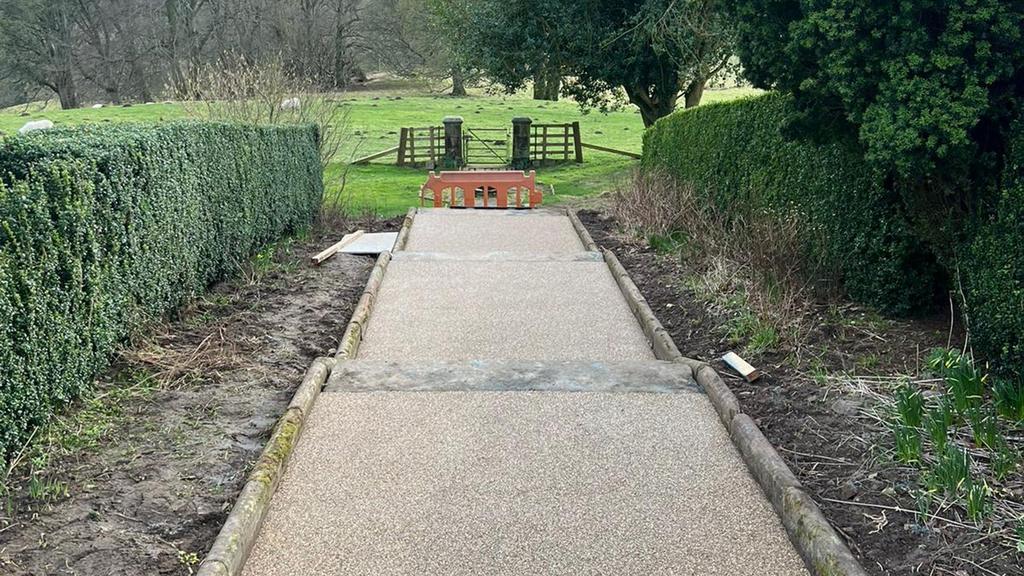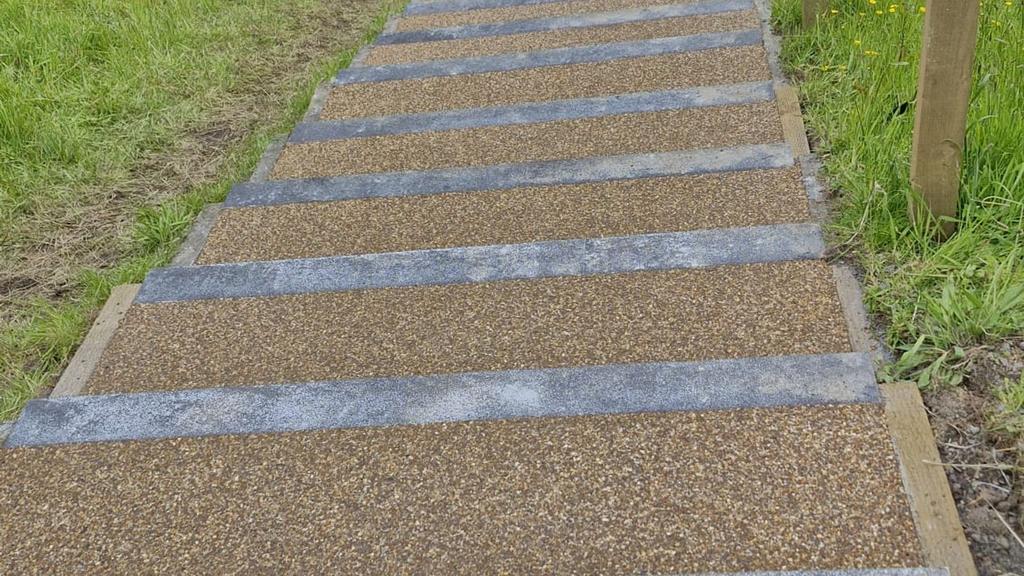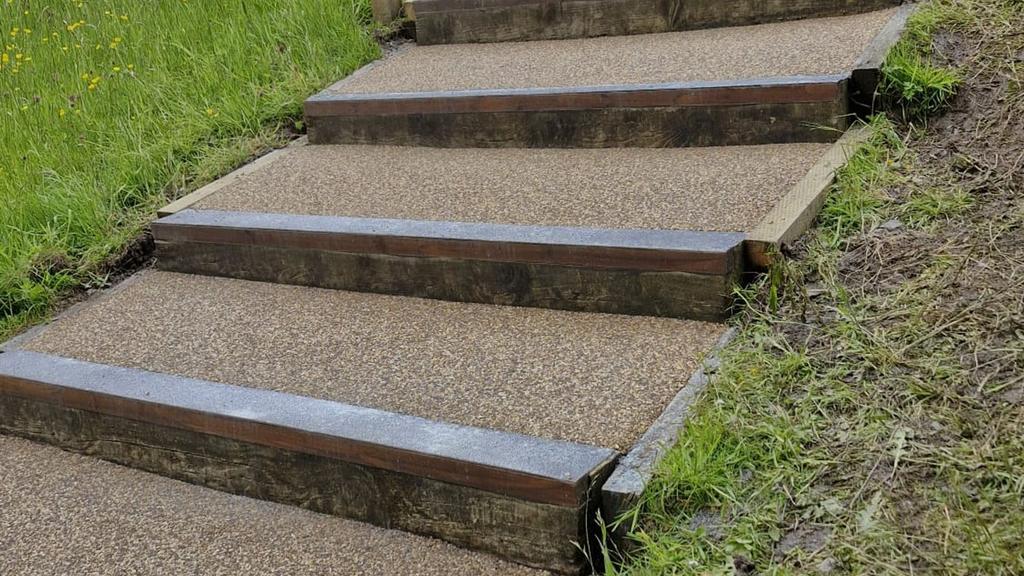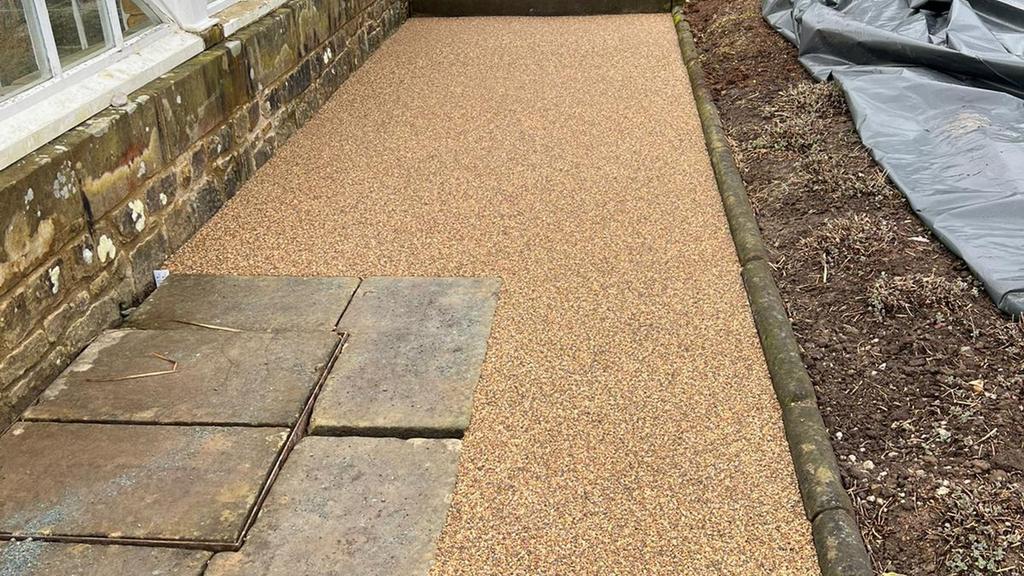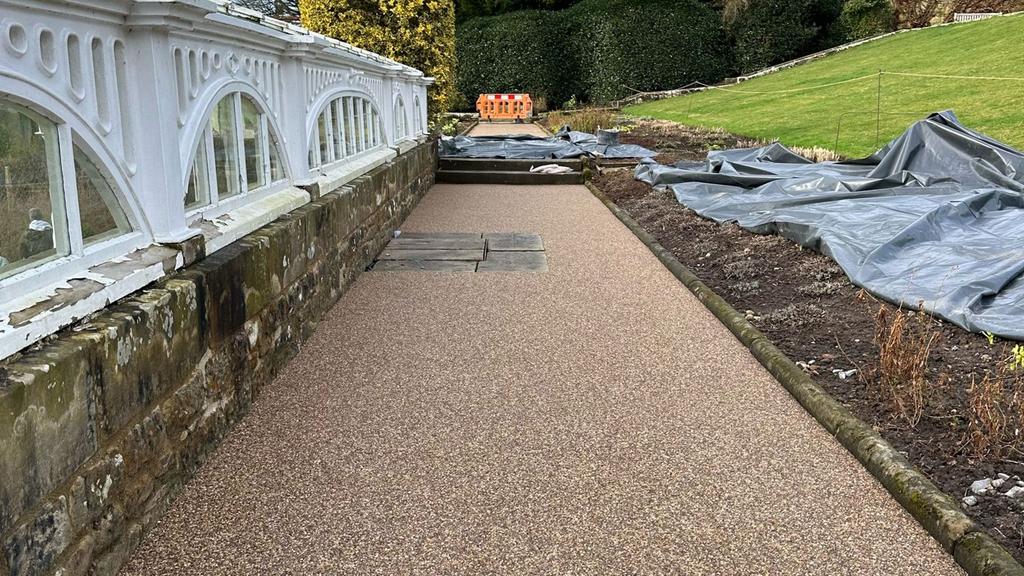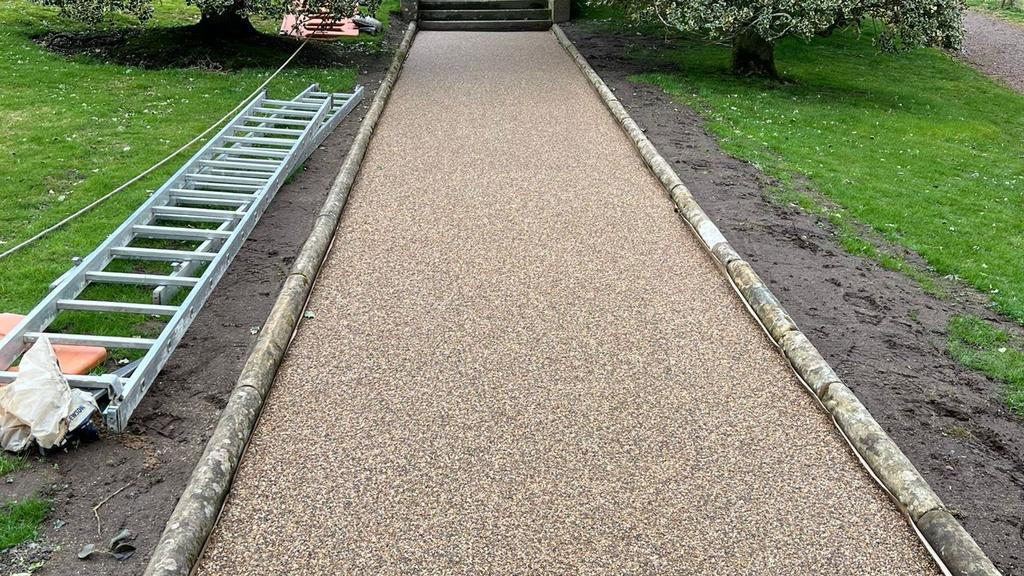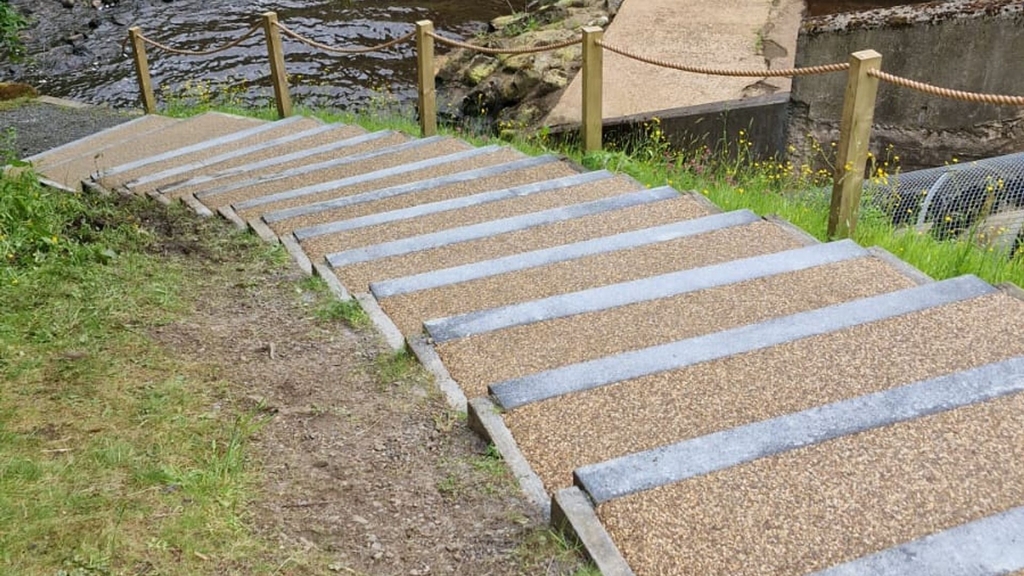
Cragside
Project Details
Client
Cragside
Services
Resin Bound Flooring
Scope
The scope of MJF’s resin-bound installation at Cragside includes designing, preparing, and installing 480m2 durable pathways and steps that complement the estate's historic Grade I listed setting. The project involves assessing and removing existing surfaces, preparing stable base layers, and applying high-quality resin-bound aggregates that blend with the natural surroundings, enhancing safety and accessibility with an addagrip terrabase system in Hazelnut. Environmental considerations are addressed through permeable materials for natural drainage, reducing runoff. Quality control ensures the installation meets durability standards, with final inspections and touch-ups securing a flawless finish. The project delivers a solution that honours Cragside’s history and pioneering heritage while providing lasting functional and environmental benefits.
Spotlight on the Project
Cragside is located in Northumberland, England and was built in the 1860s for industrialist Sir William Armstrong. It became the world’s first house powered by hydroelectricity, showcasing Armstrong’s innovative spirit.
Designed by Richard Norman Shaw, Cragside blends Gothic and Tudor architecture with cutting-edge Victorian technology, including electric lighting, a hydraulic lift, and even an early dishwasher. Surrounded by lush gardens and lakes, Cragside is a landmark of 19th-century engineering and remains a testament to the fusion of innovation and elegance.
Victorian Garden:
The formal gardens at Cragside are a stunning example of Victorian landscape design, featuring terraced beds, ornate topiary, and vibrant flower displays that reflect the grandeur of the era.
MJF’s installation of resin-bound pathways has sensitively enhanced these historic gardens, aligning with the estate’s Grade 1 listed status.
The new pathways blend seamlessly with the Victorian aesthetics, while their permeable and even surfaces ensure the gardens are now fully accessible to all visitors, preserving the timeless beauty of Cragside while meeting modern accessibility standards.
Hydro-Electric Pump:
The hydro pump at Cragside is a pioneering creation by Sir William Armstrong in the 1860s, which harnessed natural water sources to power the world's first hydroelectric house.
This early sustainable energy innovation highlights Armstrong's engineering brilliance and remains a unique and key part of Cragside's history.
The newly installed resin-bound steps and pathways blend modern craftsmanship with the historic site, offering a seamless, durable surface that enhances functionality while honouring Cragside’s legacy of innovation and environmental harmony.
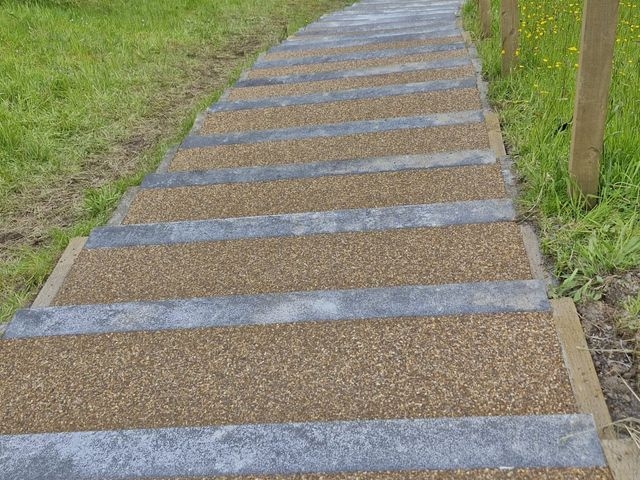
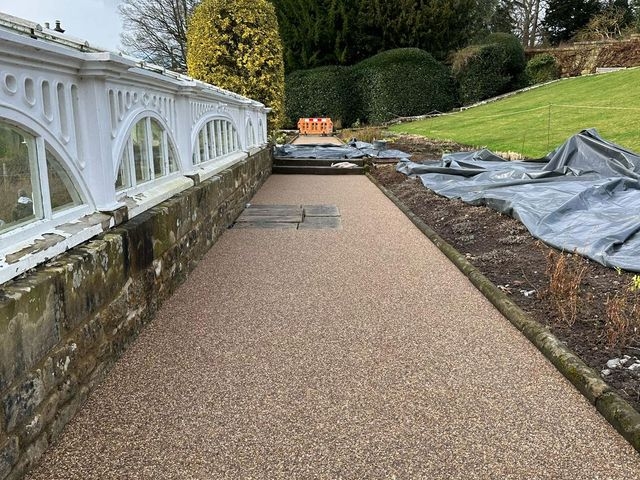
Challenges and Solutions
Grade I listing:
Installing the resin-bound surfaces at Cragside presented several challenges for MJF due to the estate's Grade I listed status. Working within the constraints of a historically significant site required meticulous planning to ensure that the installation did not alter or damage any original features. All materials and methods had to be carefully selected to blend seamlessly with the estate’s existing landscape and architecture, preserving its historic integrity.
Additionally, obtaining the necessary approvals from conservation authorities added complexity to the project, as every aspect of the installation needed to meet strict heritage preservation guidelines. The delicate balance between modernising the pathways for improved safety and accessibility while respecting Cragside’s historical significance required a sensitive approach, making this a particularly challenging yet rewarding project.
Weather:
One of the key challenges MJF faced during the resin-bound installation at Cragside was the need to complete the work outside the peak tourist season in summer, which coincided with less favourable weather conditions. Since resin-bound surfaces require dry and mild weather for proper curing and adhesion, the colder, wetter conditions of the off-season made the installation process more of a challenge.
The MJF team had to carefully monitor weather patterns and work within tight windows of opportunity when conditions were suitable. To overcome this major challenge, This required flexible scheduling, efficient use of time, and contingency planning to ensure the installation was completed to the highest standard despite the challenging weather.
Project Outcomes
The MJF resin-bound installation at Cragside has delivered several key outcomes. The new pathways and steps significantly enhance durability and safety, offering a smooth, non-slip surface that withstands heavy foot traffic while reducing maintenance needs.
The installation blends aesthetically with Cragside’s historic Grade I listed environment, blending the natural stone with the hazelnut resin bound to complement the surrounding landscape. Improved accessibility is another benefit, as the even surface accommodates all visitors, including those with mobility challenges.
Environmentally, the permeable resin-bound system allows natural drainage, reducing runoff and aligning with Cragside’s commitment to sustainability. Overall, the project adds long-term value by preserving the site’s integrity and functionality for future generations.
-640x480.jpg&w=1024&q=100)
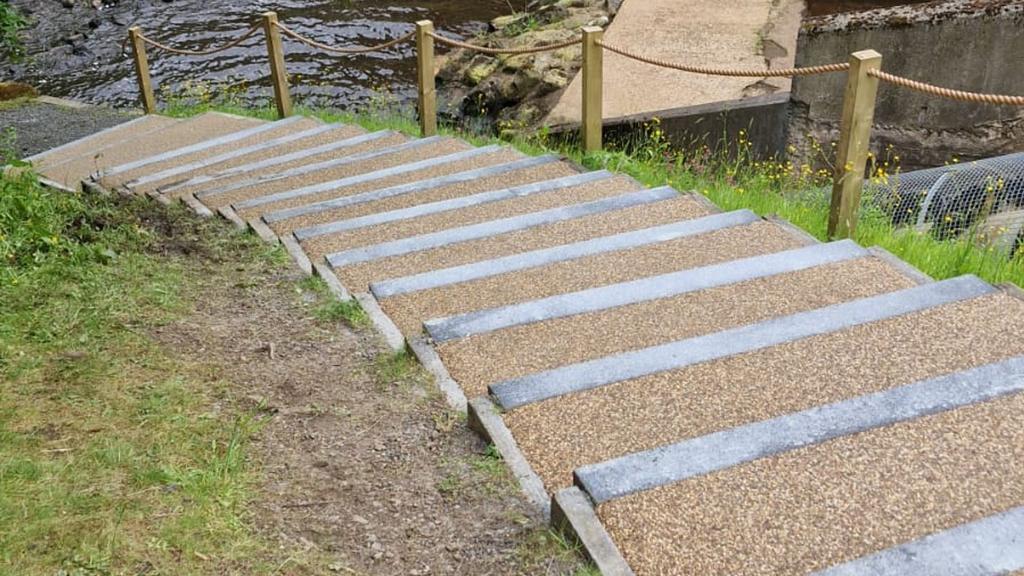
-1920x1080.jpg&w=1024&q=75)
-1920x1080.jpg&w=1024&q=75)
